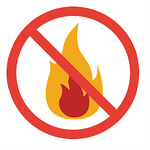
Safety is a crucial factor in cooking classes, as we know they can present various hazards because of potentially dangerous equipment, open flames, and hot surfaces. To ensure a safe learning environment and prevent accidents from occurring, teachers must prioritise safety awareness among their students. Here are some effective strategies that can be implemented:
[membership level=”0″]

- Establish safety regulations:
Display clear visual guidelines at each workstation at the start of each cooking lesson and effectively communicate them to your students. Emphasise the potential dangers associated with not following these rules, particularly when handling knives, using hot surfaces, or using fire.
- Provide comprehensive demonstrations:
When demonstrating new recipes or techniques in class, provide thorough instructions focusing specifically on safe practices. Use worksheets that detail step-by-step procedures for handling tools safely.

- Incorporate safety into lesson plans.
Integrate discussions about safety guidelines within your lesson plans by designing activities that help identify potential risks or teach proper adherence in a kitchen setting. Show videos showcasing real-life consequences resulting from negligence.
- Reinforce secure habits regularly.
Continuously emphasise the importance of practicing safe habits during every cooking class session. Promote discussions about specific incidents caused by disregarding established protocols. Encourage student participation through discussions regarding kitchen-related safety concerns they have noticed.

- Conduct assessments for risks:
Before starting each cooking session, carefully assess classrooms for any hazards such as loose cords, tidy workspaces, and malfunctioning appliances. Promptly address identified issues, ensuring student well-being. Allow team leaders in the class to also carry out kitchen safety checks; this will drive home the importance of safety in the kitchen.
- Promote collaboration and communication:
Foster an atmosphere where learners feel comfortable discussing concerns related to maintaining security during practical sessions. Create openness, allowing kids free interaction among themselves while being able to approach you directly. Establish a culture promoting interpersonal support involving all parties involved, prioritising secure actions.

- Reward safe practices:
recognise and commend those who consistently follow established protocols. Publicly acknowledge these individuals to encourage their peers to make safe choices. Positive reinforcement can motivate prioritising security measures.
In summary, establishing an understanding of safety within cooking classrooms helps create secure learning environments. As teachers, we can achieve this through clear regulations, detailed demonstrations, safety integration into lesson plans, reinforcement activities, risk assessments, promotion of teamwork among class members, responsible exemplification, and rewarding secured practices. As a result, young chefs will be equipped.





